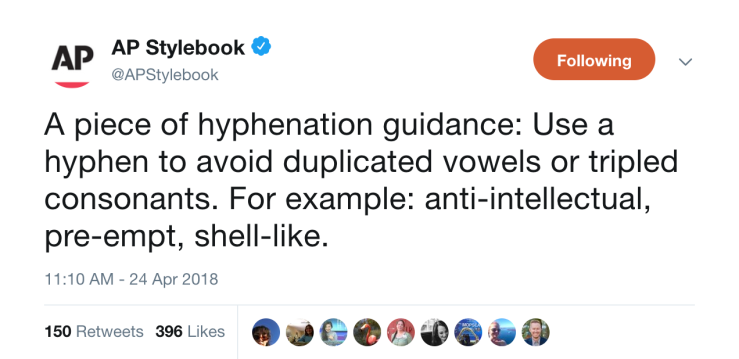Grammar Rule Upfront (GRUF): “The Associated Press Stylebook 2017” prefers to use a hyphen to break up double vowels, so pre-existing. But the “Chicago Manual of Style, 17th ed.” favors closing the word and removing the hyphen, as in preexisting. Read below for the full explanations and exceptions. For a comprehensive review of en dashes, em dashes, and hyphen rules, check out this post.
Pre-existing – AP Style

The wise AP editing gurus are the first to admit that hyphens are largely subjective. In the “Punctuation” section of the guide, the loose guidance for hyphens readily concedes that the dash is mostly stylistic and personal preference.
However, if you’re a devout AP style guide user, don’t go hyphenating all willy nilly. AP prefers a sparing use of the hyphen to clear up any confusion. And in the case of a prefix ahead of a word that starts with a vowel, AP considers the hyphen a clarifying mark. So the pre-existing hyphen breaks up the double vowels, but remember to eliminate the hyphen in other “pre”- words that attach to a consonant, such as predetermined.
When in doubt, check the preferred AP dictionary, Webster’s New World College Dictionary. If it can’t be found there, hyphenate away.
Preexisting – Chicago Style
While both Chicago and AP agree that editors and writers should use their best judgement when choosing to hyphenate for clarity, the two style guides diverge on their positions regarding “preexisting.”
In the hyphenation chart, located in section 7.89 of the CMOS, compound words formed with the prefix “pre” are generally closed. However, an exception applies if the prefix precedes a capitalized word. For example, preexist, preempt, and prewar, but pre-Vietnam War and pre-Raphaelite.
Pre-existing Conditions in Healthcare
The word pre-existing may have emerged in our collective conscious lately because of the uncertainty of how our nation will move forward with healthcare.
In 2018, Obamacare was ruled unconstitutional by a federal judge in Texas, and the Trump administration argued in favor of a court brief that defined the previously covered pre-existing conditions to be unconstitutional. In the midst of all this confusion about pre-existing conditions, we’re reading the word more than ever in the media, and perhaps some of us are considering the future of coverage for our own pre-existing conditions.